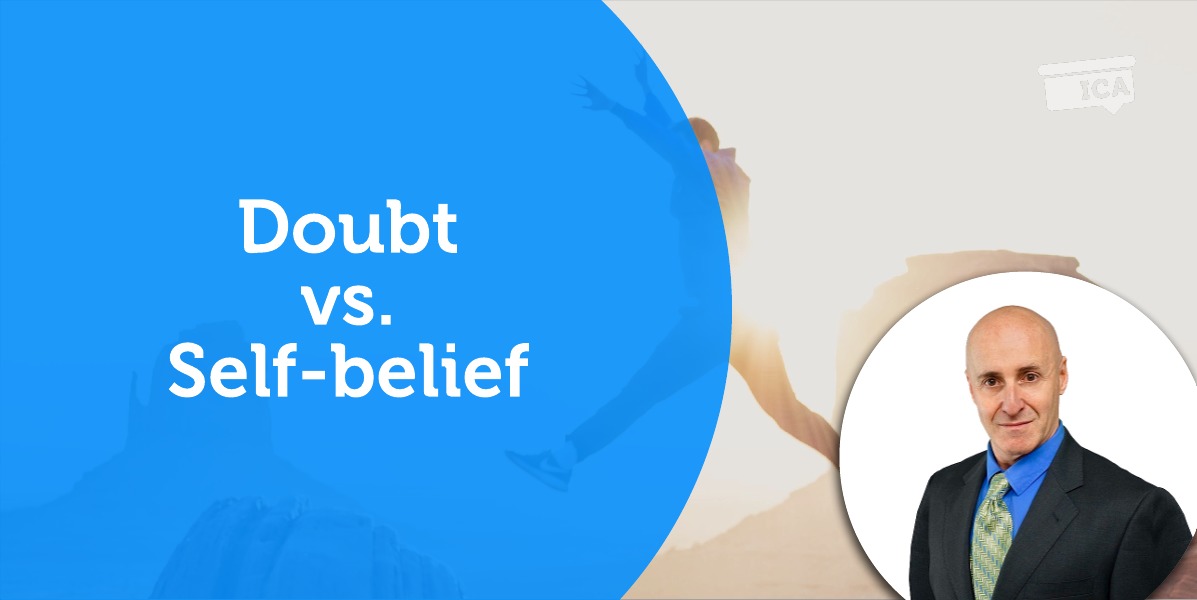
A Coaching Power Tool Created by Paul Lewis
(Transformational Coach, UNITED STATES)
Introduction
There’s a powerful underlying belief that often undermines momentum, progress, and outcomes: Doubt.
Uncertainty, combined with a lack of conviction, can sabotage an individual’s potential. Genetic and/or environmental, this limiting belief can destabilize the strongest foundation and strategy. I’ve seen this frequently with clients, and have experienced its destabilizing effects first hand. This paper looks at the issues surrounding this ‘limiting belief’ and presents a format for creating a meaningful and sustainable ‘shift’ in thought, process, and execution.
Personal Experience
Doubt became an overarching reality in my life, growing up in a combative household. The impact of years of experiencing doubt allowed for greater self-awareness. I began by recognizing it’s impact, as it influenced the way I thought and processed. I also recognized consistent patterns that result in uncertainty and deliberation. It was this experience that had me seek a solution, and break with a long-held limiting belief that was undermining my potential. The work was long and arduous. The results were profound. However, recognizing the way that we are wired, I understood that limiting beliefs are so heavily ingrained, that they remain dormant and ready to sprout. A stressor, or trigger, can catalyze a return to past, unwanted habits. It then became important to stay on top of my game. I pursued this process, taking a good, hard look at what I desired as my outcome. I challenged the ‘doubt’ head-on. I took action.
I use this template with my clients, at times sharing the personal experience to emphasize the need for a strong foundation and incremental action steps.
Explanation
In such a fast-paced, competitive world, we not only compete with everybody around us, but we are also left to compete with ourselves. What’s the significance of this?
Our clients often become entangled in uncertainty, hesitation, and self-doubt. This undermines their potential, impacting performance and output. Observing ‘doubt’ in my clients over the years, I often turn to the insightful words of a public speaker, writer, and self-improvement guru, Dale Carnegie:
Inaction breeds doubt and fear. Action breeds confidence and courage. If you want to conquer fear, do not sit home and think about it. Go out and get busy. (1)- Dale Carnegie
Self-doubt breeds complacency. It’s what stands in the way of self-expression, self-belief, and growth. It’s ‘inward thinking’, which is often triggered by past experiences and underlying beliefs. This leads the individual conforming to their comfort zone, rather than taking a powerful step forward to express their identity and intrinsic beliefs.
Everybody has a success story that can be told, if they are willing to advocate for themselves, reframing doubt, by asking: What is the reason this doubt exists? As confrontational as this might be, the alternative is often far less alluring.
What brings me to this conclusion? The following:
When a client presents with self-doubt, I challenge them to consider the above 2 options. Presenting these options lays the groundwork for thoughtful processing, greater awareness, and then momentum. This often triggers a powerful ‘shift’. It’s a possibility that prepares a client to acknowledge, take ownership, and invest in themselves, and work on overcoming this limiting belief. The client has to be willing to acknowledge their self-doubt, for a shift to occur.
A lack of conviction can be turned on its head when there are a feasible alternative and way forward. If doubt exists, and if the client views it as an impediment to their progress and achieving their goals, then the antithesis – self-belief, becomes a possibility. This ‘shift’ has the power to begin chipping away at an underlying, often long-held belief.
How to help the client see and experience an alternative to doubt:
Through personal research, observation, and experience, doubt manifests physically and physiologically. Low energy, complacency, irritability, fear, inertia, pain syndromes… manifest when doubt lingers, when it becomes chronic. When symptoms like these arise, I challenge my clients to consider breaking these cycles – address the symptoms while honing in on the root cause.
Self-belief is empowering. There is a very clear and observable shift when I ask a client: How would you view life if you ‘exist’ in self-belief? I often pose this question in role play, whether it’s a visualization or through NLP tools. Clients often exhibit the following changes, even if it’s a momentary shift:
The shift is ‘chemical’ in nature: endorphins, dopamine, GABA, norepinephrine are released, creating a positive response, and a catalyst to work further with a client experiencing doubt. This is a powerful question that often resonates when there is time for ‘pause’.
Application
For the life of an executive, it’s important to assess all variables that create doubt, from long-held limiting beliefs to environmental factors that undermine performance and output. When clients doubt surfaces, it’s important to be proactive and get to the root of the issue. Left to its own devices, doubt often leads to secondary symptoms, as I discussed earlier. I cue in my clients, so they get a clear picture of what happens when doubt becomes chronic and is left to linger.
Symptoms arise, though the client might not be aware that self-doubt is the underlying cause, especially if self-doubt is a long-held limiting belief.
Questions that create greater awareness about self-doubt might include the following:
To help support clients shift to self-belief, I’ve found questions like the following have been useful:
Reflection
Like any limiting belief, I always have my clients view their doubt as an opportunity for growth. It’s this association with growth that allows for ‘movement’ towards sustainable results. The logic behind this is to support the client to ‘see and experience’ the possibilities: what they can create from something they might subconsciously hold onto as ‘negative’. This shift in perspective and mindset is empowering and accessible to anyone with realization, practice, and consistency.
References
(1) “Inaction breeds doubt and fear…” The Five Essential People Skills – Dale Carnegie